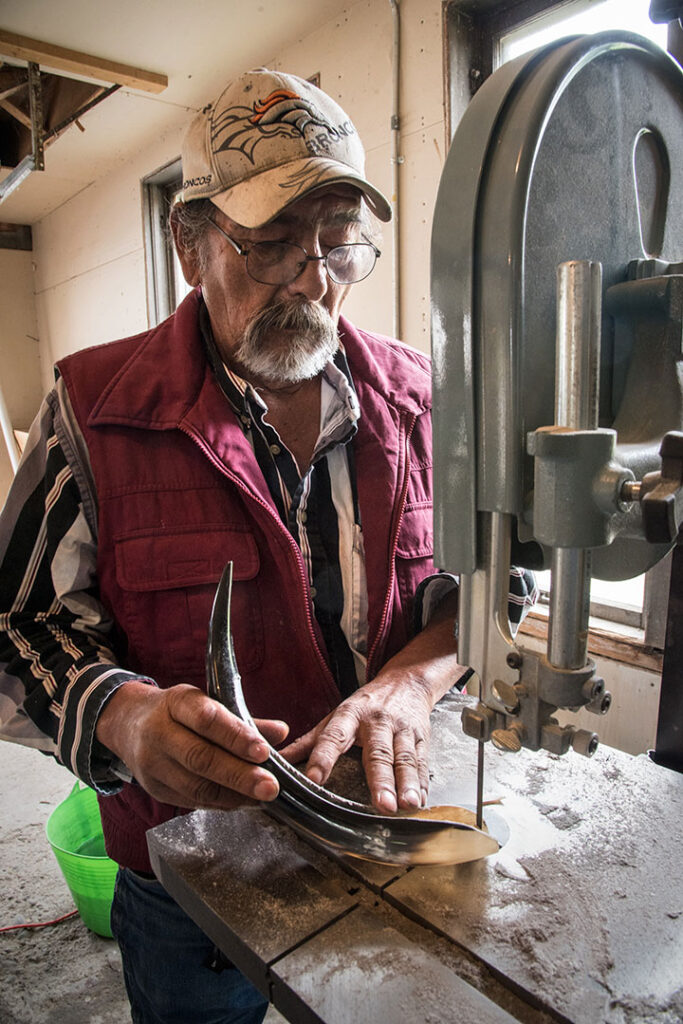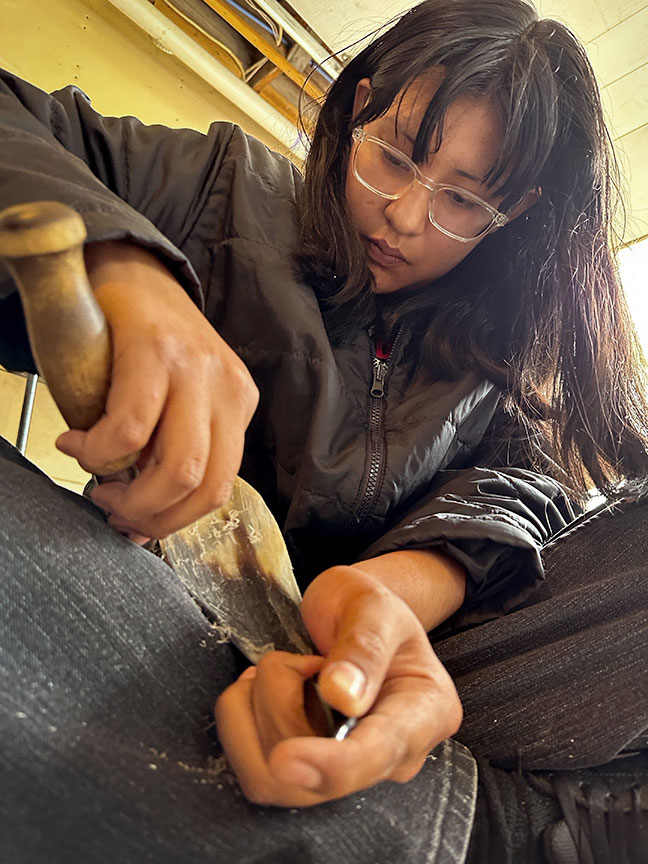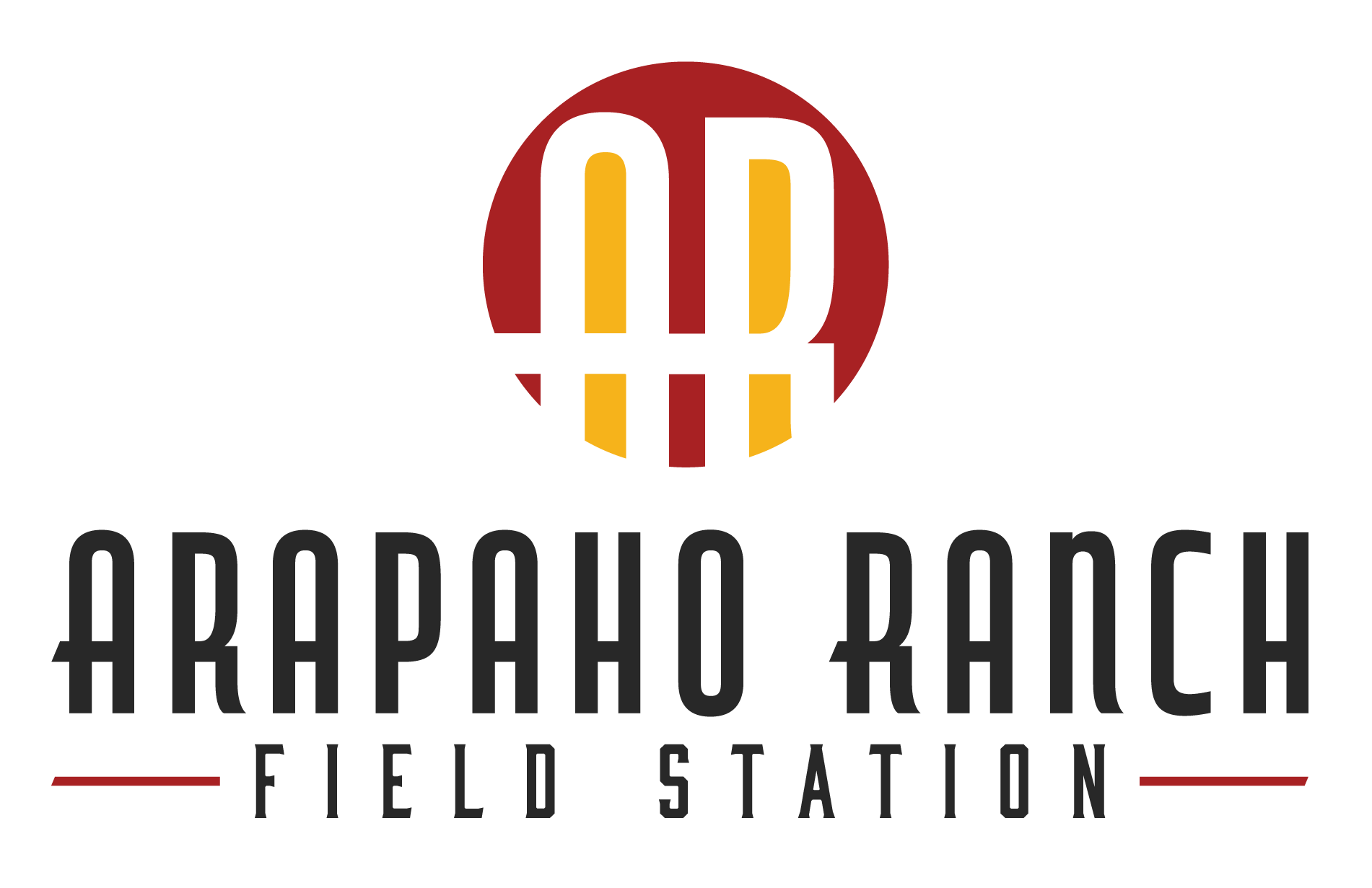This past summer, artist Tom Lucas taught two horn-spoon-making workshops at the Arapaho Ranch Field Station.
Known as the “Tomahawk Tom” in the Mountain Man arena, Tom has mastered the art of replicating Indian artifacts. Through his workshops, Tom led participants through traditional methods of making a cow horn or bison horn spoon.
What makes horn a unique material to work with?
Horn is sometimes referred to as “18th century plastic.”
The part we see of an animal’s horn—which, unlike antlers, does not shed—is a layer of keratinized epidermis (keratin); the same material as fingernails, hooves, and hair.
To use horn as a medium, the keratin sleeve is taken from the skull, cut along the inside curve, then heated to 400°F with water, oil, or direct heat.
(Tom shared that he’s even put horns into the hot mineral pools near Thermopolis overnight and been able to bend them any way he’d like the next day!)

Wyoming Indian High School students learn the art of horn-spoon-making
Much like their ancestors have for thousands of years, workshop attendees from Wyoming Indian High School began their horn-spoon-making journey by choosing a horn that spoke to them.
Next, students applied heat and used hand-picked rocks to wedge their horn into the desired shape. They then drenched both horn and rock in water, assessed the shape that resulted, and continued these steps until the desired shape of both the spoon bowl and curve of the handle was attained.
One fat, stubby horn became a spoon with a bear head; a long, straight horn transformed into an Eagle head. Some completed spoons were beaded on the flat part of the handle; others would later be wrapped with a bit of smoked buckskin around the handle, then topped with a beaded geometric Arapaho symbol.
Keeping traditions alive
During the workshops, Tom provided a selection of homemade scrapers for students to use in smoothing their horns to a mirror finish, as well as for removing material to thin the walls of their horns and make them easier to bend.
In the process, one student’s horn formed a crack that didn’t become evident until much scraping had already been done. A teacher from the high school announced that the crack actually made it the best spoon; it’d be the one used to snag the meat from the soup!
Workshops like these keep traditional ways of making alive, immersing youth in their culture and connecting them to their ancestors—which is important for understanding their identity.

Summer 2024 workshops in the works
Tom plans to return to the Field Station this summer to present two more horn spoon workshops, as well as deliver a week-long painting workshop.
In addition to Tom’s workshops, summer 2024 is already bright with opportunities to come learn with us!
Be sure to sign up for email updates (the form is at the bottom of the page) and get the first chance to register for:
- A blacksmithing series that starts with the basics and ends with making a drift and a hot cut
- A tong workshop to make tongs; a tool no blacksmith can have too many of!
- A botanicals workshop, in which you’ll learn to shape plant forms for iron ornaments
What events are coming up next?
Take a look at our events calendar to find out!

